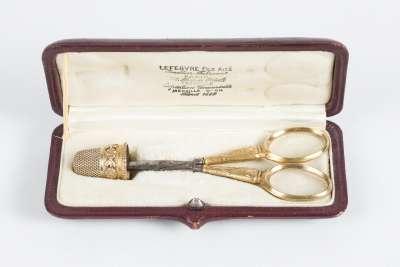A turned wooden French soldiers' sewing kit used by World War 1 soldiers for mending their uniforms whilst in the field and in the trenches. It houses a bodkin for making holes in tough fabric in one end, a place for storing the needles in the other end and bobbins for thread. Circa 1910-1919.
Condition: Good with wear consistent with age and use.
Dimensions: Weight 20gm, Length 13cm, Width 1.5cm, Height 1.4cm .













